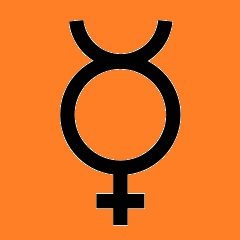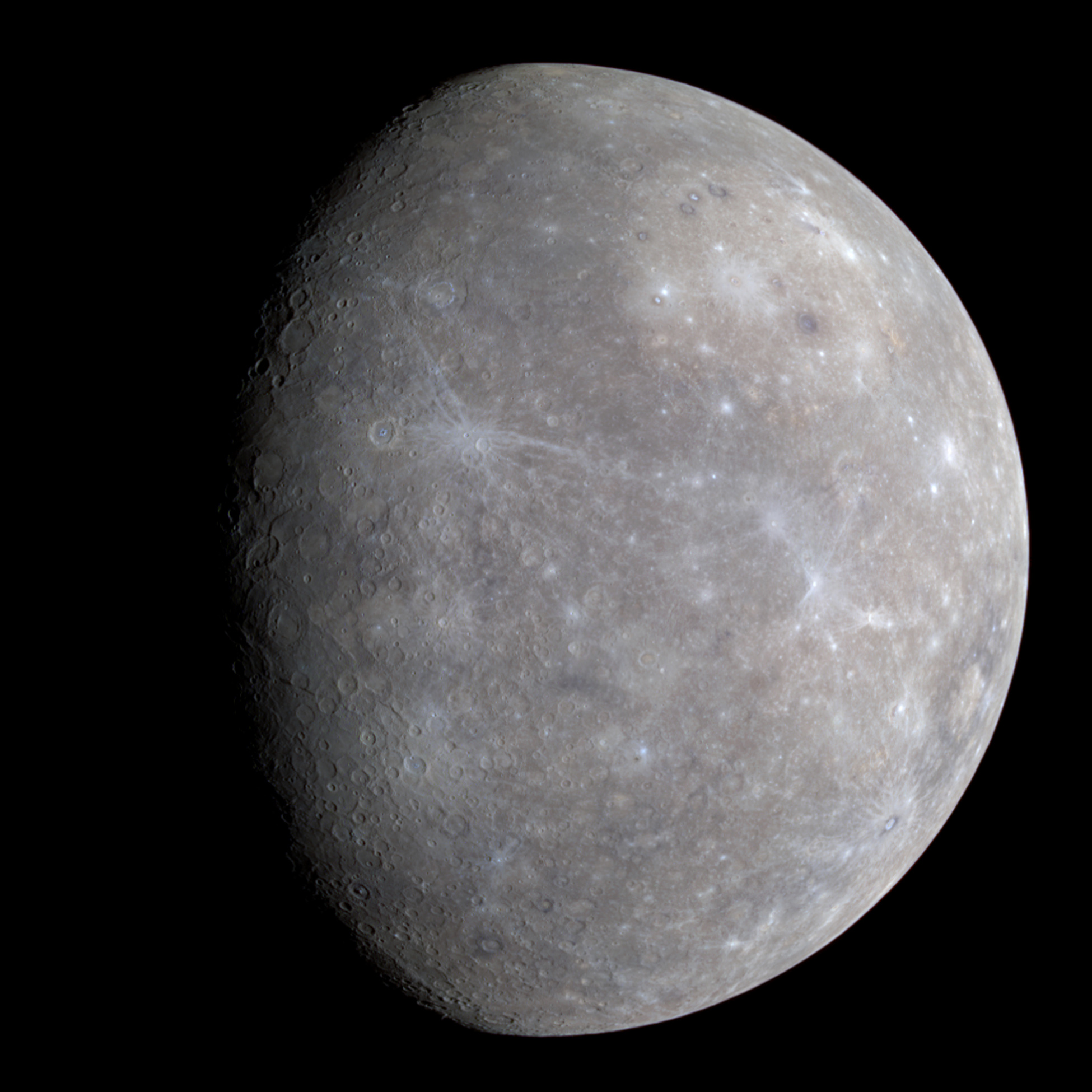
Mercury is the closest planet to the sun. It was named after the ancient Roman god, Mercury, who was the messenger of the gods. The Greek counterpart for Mercury is Hermes. The astronomical symbol for Mercury is like the one for Venus, but with horns.

Mercury revolves around the sun in approximately 88 Earth days (more precisely 87.969 days). It rotates on its axis very slowly — exactly twice every three Mercurian years. However, someone residing on Mercury would perceive the Mercurian day as lasting 2 Mercurian years.
Temperatures on the planet range from -280 ºF (-173 ºC) at night to 800 ºF (427 ºC) during the day. The polar regions on the planet remain at a constant -13ºF (-93 ºC).
During its orbit, the planet reaches its closest point to the sun at about 28,750,000 miles (about 46 million kilometers).It reaches its most distant point from the sun at about 43.6 million miles (about 69.8 million kilometers).
Its diameter at the equator is about 3032 miles (about 4879 kilometers). The surface gravity is about 38% of that of the Earth's. So, 175 pound man would weigh only 66.5 pounds on Mercury and 110 pound woman would weigh only 41.8 pounds. For someone who wanted to reduce his or her weight, that would be a major weight loss. If you want to lose weight, go to Mercury!
The planet has almost no atmosphere, but a very strong magnetosphere. The magnetosphere does an exceptionally good job of shielding the planet from the solar wind.
The surface of the planet is cratered much like that of the moon. There are volcanoes on the planet. 90% of the volcanic deposits are within impact craters.


